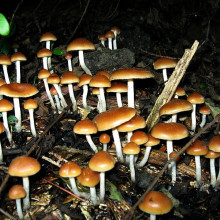This week we find out why certain mushrooms contain hallucinogens, plus we ask, how long could you survive by eating your own limbs?
In this episode

00:00 - Why do fungi make hallucinogens?
Why do fungi make hallucinogens?
We put this to Professor Mike Cole from Anglia Ruskin University...
Mike - The reason that many fungi produce what are called secondary metabolites is as a defence reaction to their environment. For example, they might prevent attack by animals, plants, other fungi, or in fact, bacteria. They're called secondary metabolites because they're not essential for life in the same way that vitamins, sugars and amino acids are, but they do confer some advantage on, in this case, the fungus that produces them.
The cost includes producing precursor chemicals, supplying the energy compounds, supplying the reducing power. Whilst as forensic scientists we understand a lot about the genetics for the identification of these organisms, there is nothing known about the genetics of how these compounds are produced although we do understand the biochemical pathway in terms of the starting materials and the end product.
There are a host of other compounds that are produced by fungi, plants and bacteria. Perhaps one of the most famous of these are the ergotamine alkaloids which are used postoperatively, but also are hallucinogenic. And also, compounds produced by fungus called claviceps which supplies the precursor chemical for our friend, LSD.










Comments
Add a comment